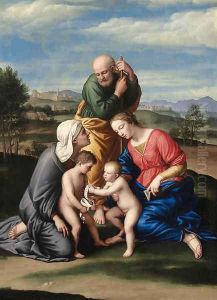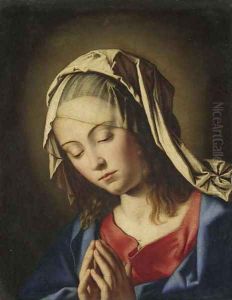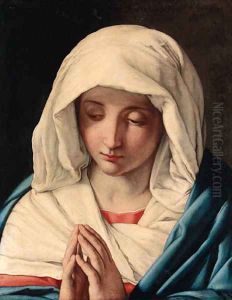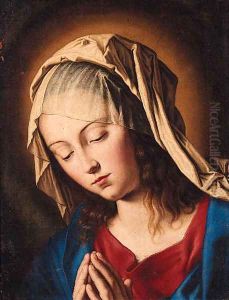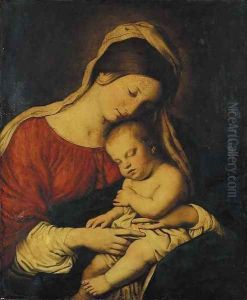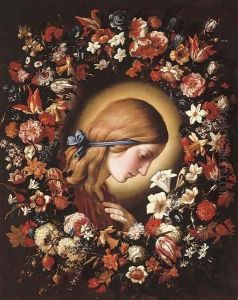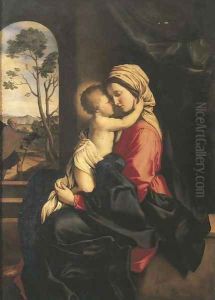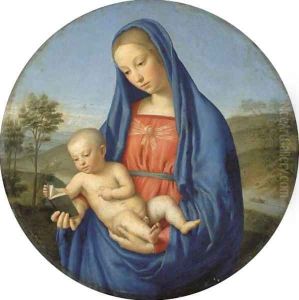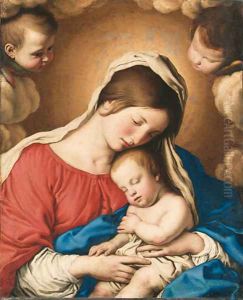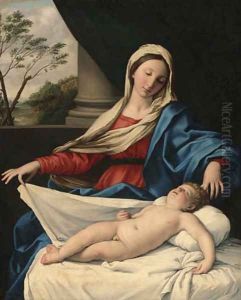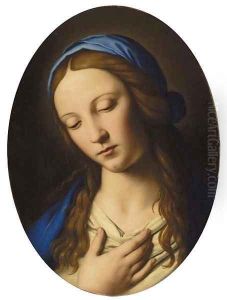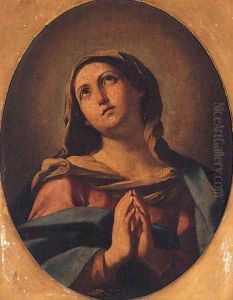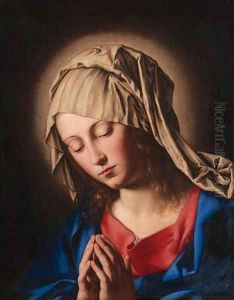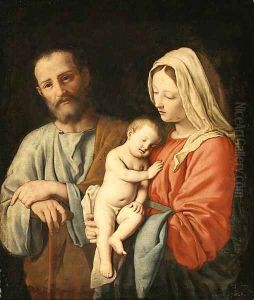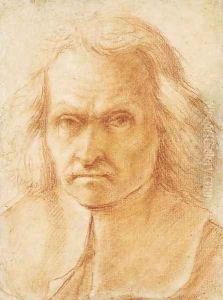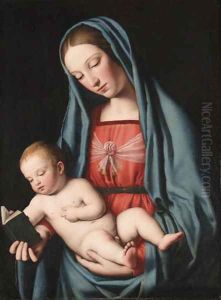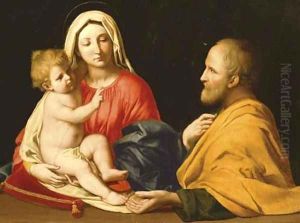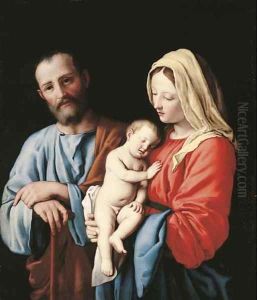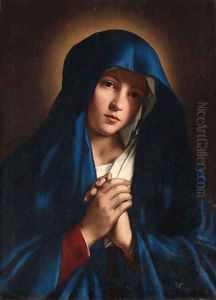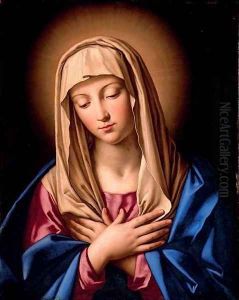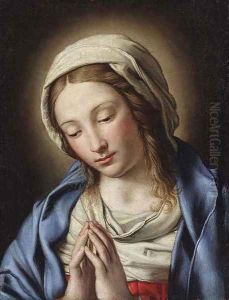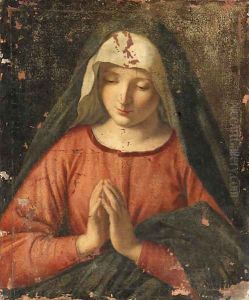Giovanni Battista Salvi, Il Sassoferrato Paintings
Giovanni Battista Salvi, better known as Il Sassoferrato from his birthplace of Sassoferrato in the Marche region of Italy, was an Italian Baroque painter renowned for his devotional works and Virgin Mary representations. Born in 1609 into a family of artists, he was initially taught by his father, Tarquinio Salvi. His paintings are characterized by their clarity, contemplative mood, and meticulous technique, which reflects the influence of the Bolognese School and artists like Guido Reni.
Salvi's early career is not well-documented, but he is believed to have studied in Rome, where he was influenced by the works of Domenichino and the classical style of Raphael, which was evident in his serene and polished compositions. Unlike many of his contemporaries, Salvi did not seek dramatic effects through chiaroscuro or dynamic compositions. Instead, he focused on achieving a refined elegance and spiritual tranquility in his religious paintings.
Il Sassoferrato's works were primarily small-scale devotional paintings intended for private worship, and he was particularly adept at capturing the purity and grace of the Virgin Mary. His famous works include the 'Madonna and Child' paintings, the 'Madonna in Prayer', and the 'Immaculate Conception'. These paintings often featured a highly detailed treatment of the Virgin's garments and a soft, luminous palette that enhanced the spiritual quality of the subject.
Despite his focus on religious themes, Salvi's refined style did not go unnoticed by the nobility and clergy, who became his patrons. He worked on several commissions for churches in Rome and his native Marche. However, he remained relatively modest in his lifestyle and did not achieve the same level of fame as some of his contemporaries during his lifetime.
After his death in 1685, Il Sassoferrato's reputation continued to grow, and he was remembered for his devotion to traditional religious subjects at a time when the Baroque style was evolving towards more dramatic and emotional expressions. His art represents a counterpoint to the prevailing trends of the Baroque period, offering a quiet and meditative approach to religious painting. Today, his works are held in high esteem and can be found in major museums and collections around the world.
